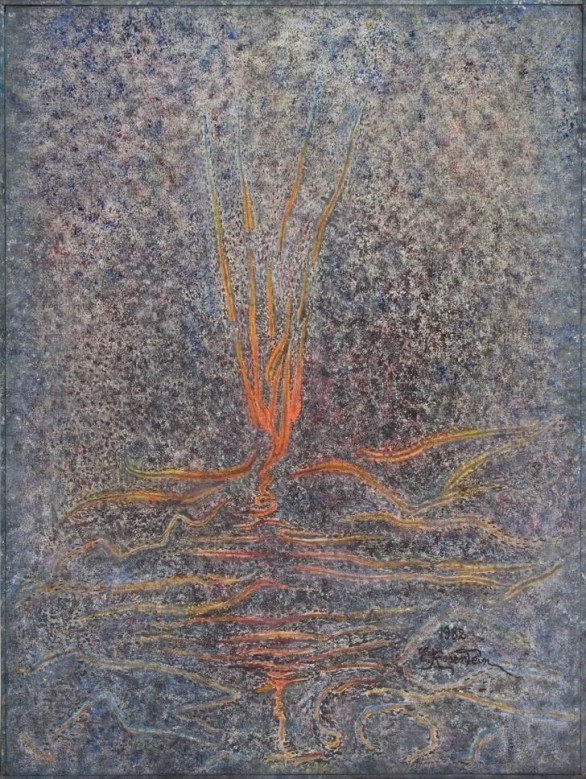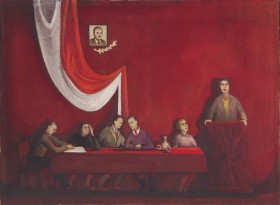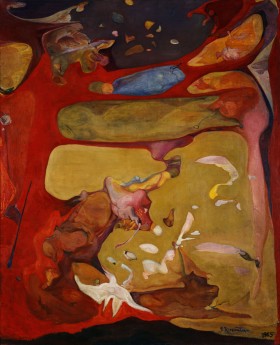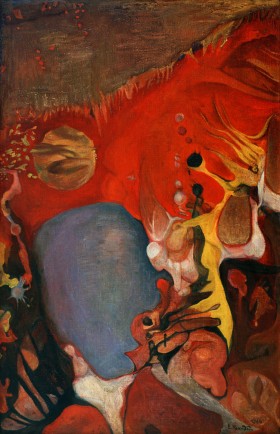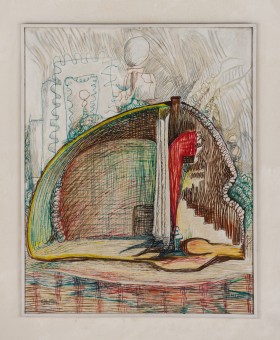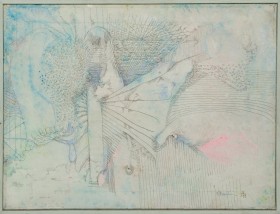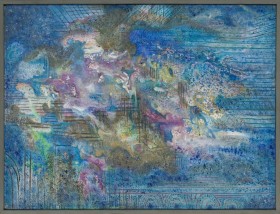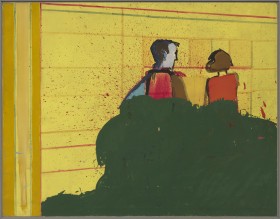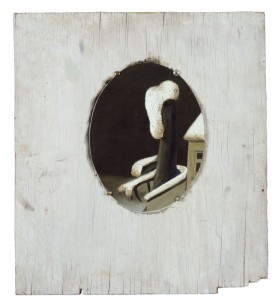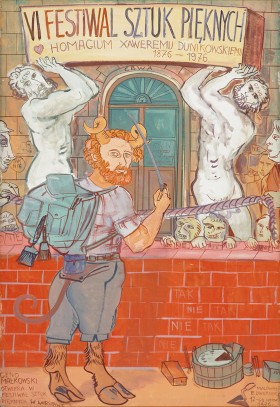Fountain of Fire and Silence
- type of object: painting
- date: 1982
- material/technique: mixed media on canvas
- dimensions: 63 x 48 cm
- inventory No.: M-335
- image licensed under: CC BY-NC-ND 3.0
This cosmogonic depiction, which reveals a fascination with the elements and especially with fire (we may be looking at a volcanic eruption), is an example of Erna Rosenstein’s art of the 1980s. The ascetic composition was created with curving lines drawn against the background of a quivering texture that brings to mind glowing lava.
Averse to all canons and conventions, Rosenstein infused her paintings with her emotions and associations, and used them as a record of her creative process. The latter was more important for her than the final result in the form of the painting. She also questioned the purpose of distinctions drawn by art critics: figuration vs. abstraction, drawing vs. painting, or object vs. action. She believed it to be pretentious for artists to strive to develop their own personal styles – it was more important for her whether the artist was authentic in their expression. Art critics often highlighted her sense of colour (the painting described here combines tainted blue with red and orange). Surrealism, often mentioned in the context of her work, manifested itself not just in the nature of her paintings, but also in her approach. Tadeusz Kantor, who designed Rosenstein’s solo exhibition at Zachęta in 1967, understood this well: next to her oil paintings, he placed a cabinet from her room, treated as an assemblage, along with a few miniatures and items made of artificial glass.
Rosenstein was also a poet, which is echoed in the titles of her works. The back of the frame bears an inscription, possibly in the artist’s own hand: “The beginning of fire and water” (it is not clear when the title was changed to the current Fountain of Fire and Silence). An important element on her canvases is the decorative signature, which brings to mind Art Nouveau flourishes. In this painting, it is placed higher up and is even more decorative (it was less elaborate in her earlier works, while the shapes in the paintings were wilder). The artist never considered her paintings complete, and never thought about the composition as limited to the canvas only; this is manifested here by the frame, painted in the same way as the background of the composition.
Karolina Zychowicz
